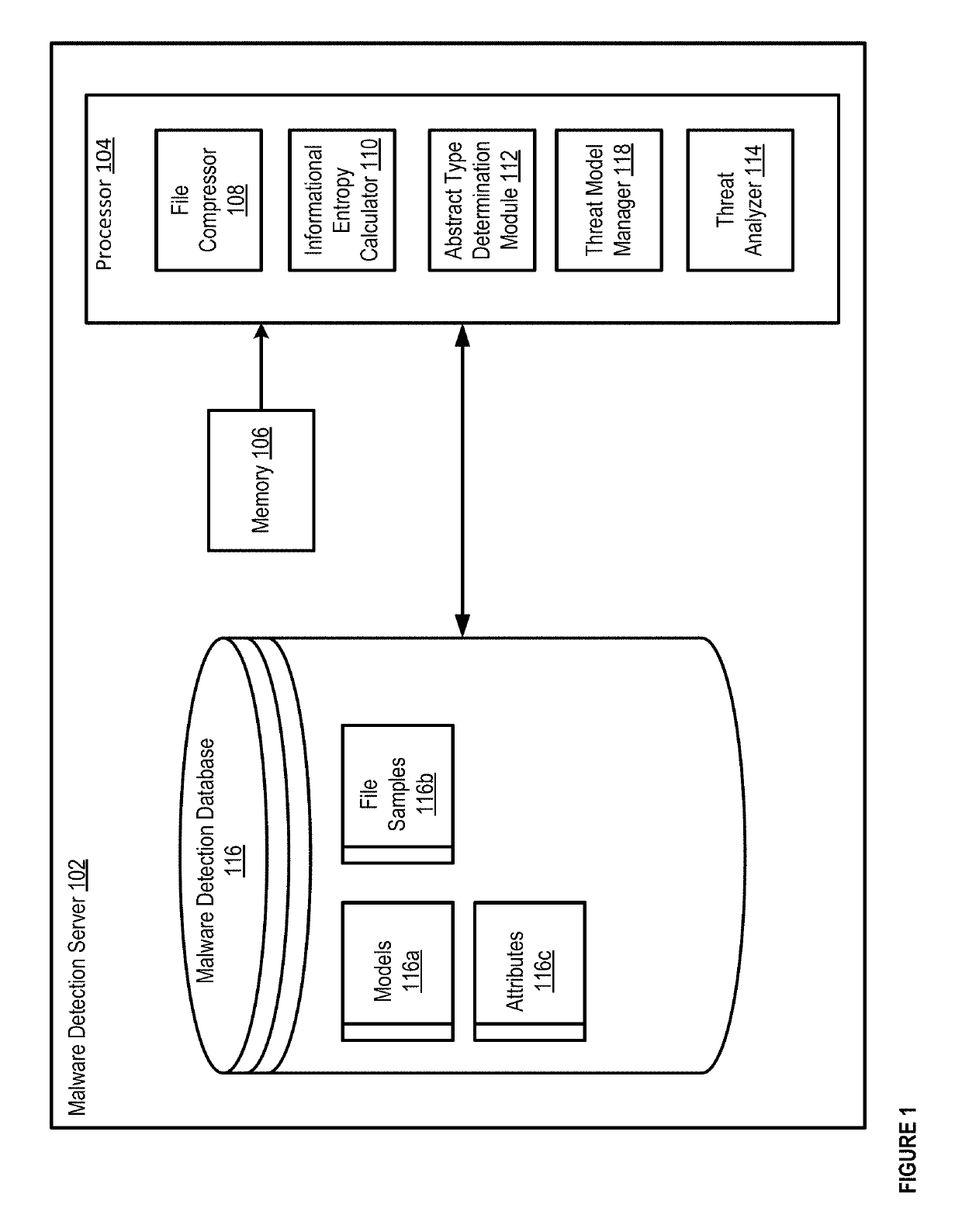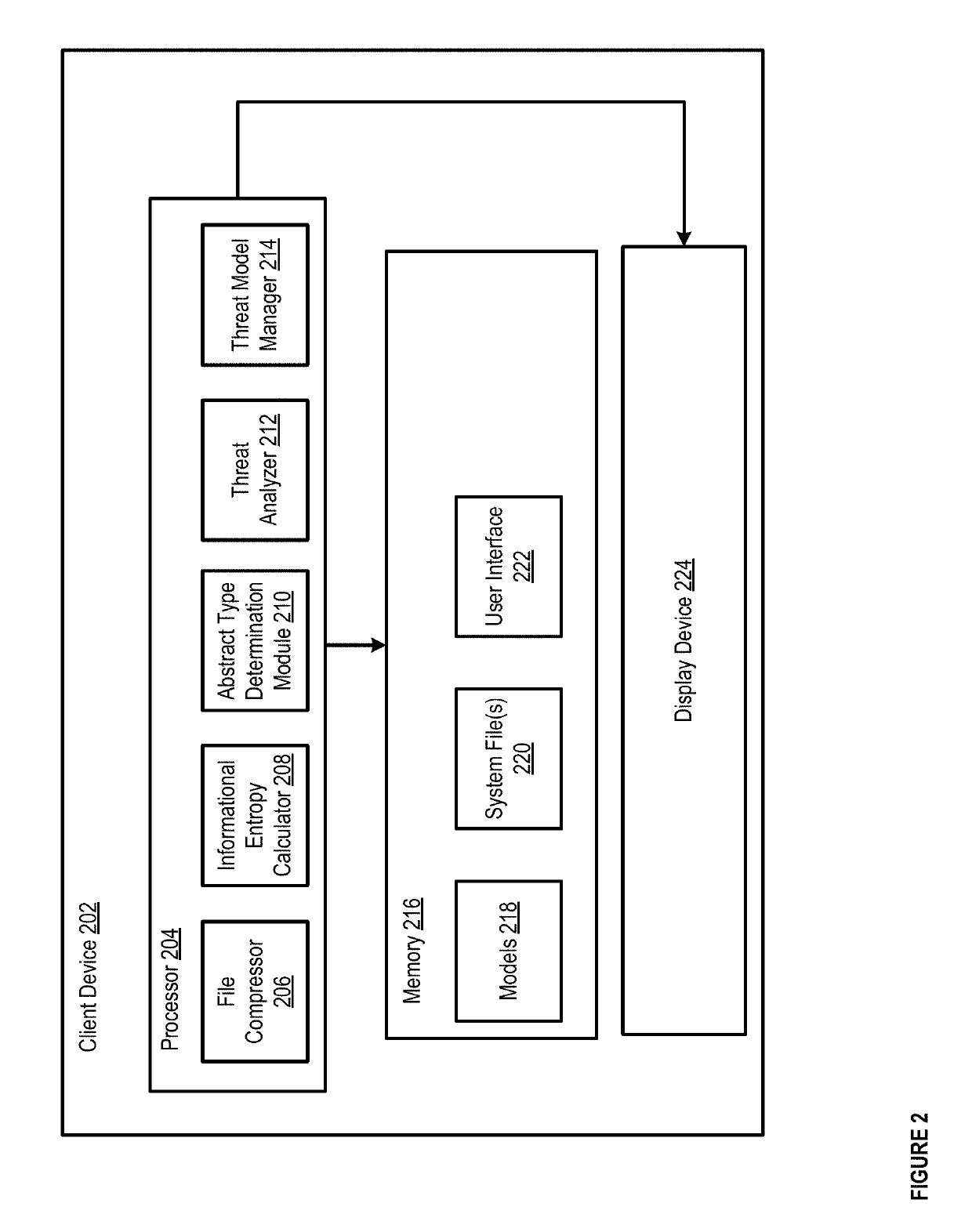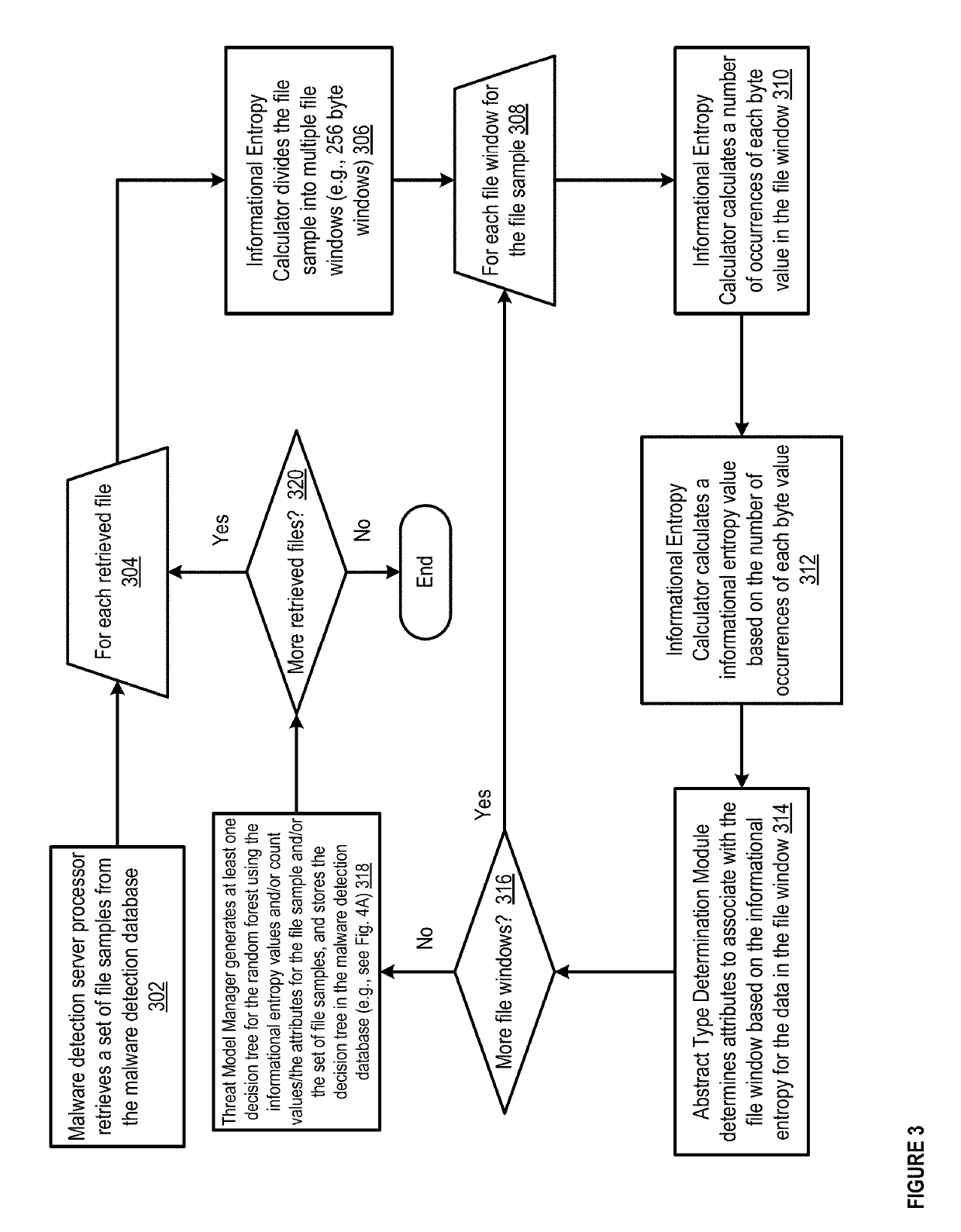Methods and apparatus for machine learning based malware detection
a machine learning and malware technology, applied in probabilistic networks, instruments, biological models, etc., can solve the problems of system false detection of malicious file changes, large number of false positives, and time-consuming and resource-intensive processes
- Summary
- Abstract
- Description
- Claims
- Application Information
AI Technical Summary
Benefits of technology
Problems solved by technology
Method used
Image
Examples
Embodiment Construction
[0019]In some implementations, methods and apparatuses disclosed herein can cluster (e.g., classify) malware samples to determine whether other input samples are malware files. For example, a malware detection device can use machine learning techniques to automatically and dynamically determine clusters with which to classify malware samples, and can determine which malware samples belong in each cluster. The malware detection device can cluster malware samples, security events, network streams, and / or malicious domain names, so that the malware detection device can later determine whether a threat has been detected on a network, e.g., based on determining whether future input samples, security events, and / or the like can be classified within an existing malware cluster.
[0020]In some implementations, clusters can include malware clusters (e.g., clusters of malware) and benignware clusters (e.g., clusters of files that are not malware). The machine learning processes used by the malw...
PUM
 Login to View More
Login to View More Abstract
Description
Claims
Application Information
 Login to View More
Login to View More - R&D
- Intellectual Property
- Life Sciences
- Materials
- Tech Scout
- Unparalleled Data Quality
- Higher Quality Content
- 60% Fewer Hallucinations
Browse by: Latest US Patents, China's latest patents, Technical Efficacy Thesaurus, Application Domain, Technology Topic, Popular Technical Reports.
© 2025 PatSnap. All rights reserved.Legal|Privacy policy|Modern Slavery Act Transparency Statement|Sitemap|About US| Contact US: help@patsnap.com



